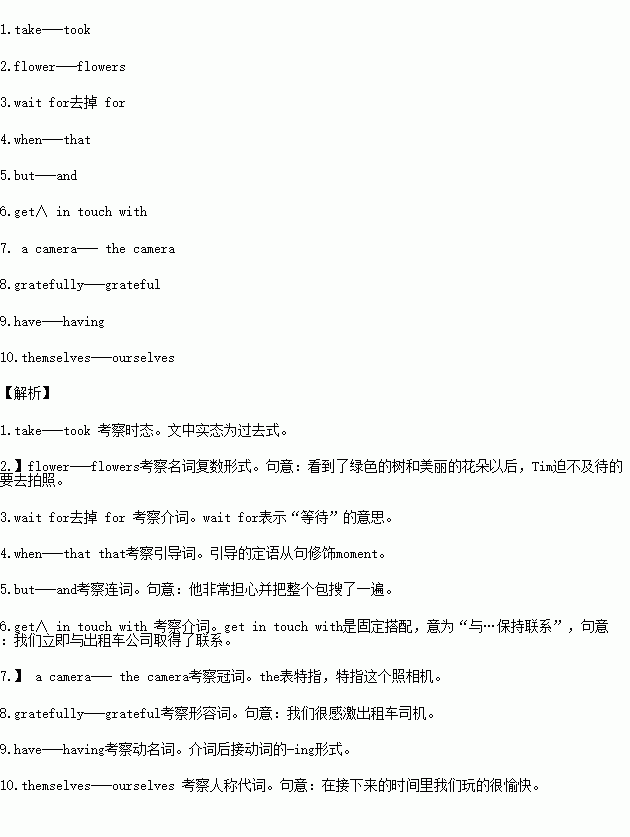题目内容
短文改错
文中共有10处语言错误,每句中最多有两处。每处错误仅涉及一个单词的增加、删除或修改。
增加:在缺词处加上一个漏字符号(∧),并在其下面写出该加的词。
删除:把多余的词用斜线(/)划掉。
修改:在错的词下划一横线,并在该词下面写出修改后的词。
注意:1. 每处错误及其修改均仅限一词。
2.只允许修改10处,多者(从第11处起)不计分。
Today, my foreign teacher Tim and I went to the People’s park together. We take a taxi and it wasn’t long before we arrived at the park. On seeing the green trees and beautiful flower, Tim couldn’t wait for to take pictures. It was at that moment when we found his camera was missing. He was very worried but searched all over his backpack. Sadly, he just couldn’t find it. Suddenly it struck me that he might have left it in the taxi. So I immediately got touch with the taxi company. About half an hour later, the driver returned a camera. Both of us were gratefully to the driver, and Tim, in particular, insisted on have a photo taken with him. Tim and I enjoyed themselves during the rest of the day

